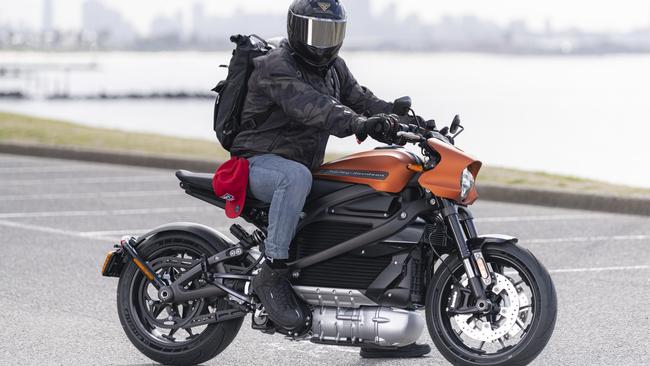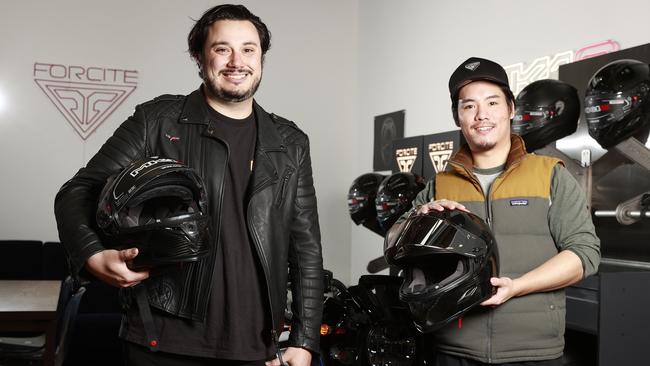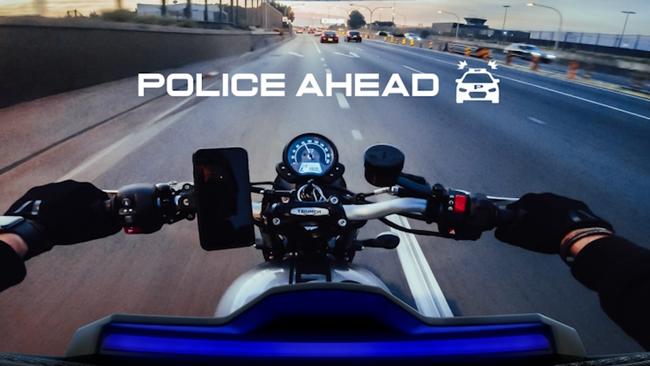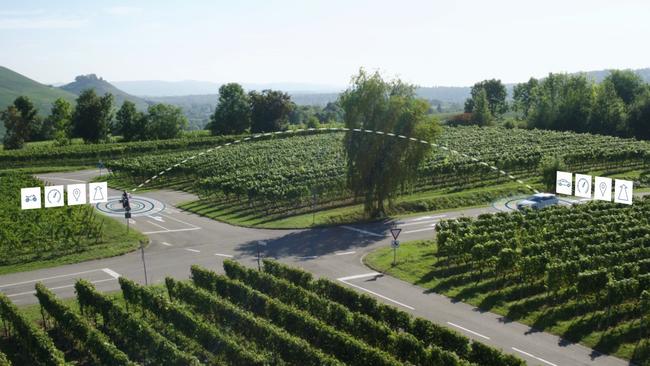Forcite to work with universities on Australian future helmet to save more lives
An Australian company is making incredible advances with the world’s first smart helmet which includes a built-in camera to save more lives.
Motoring News
Don't miss out on the headlines from Motoring News. Followed categories will be added to My News.
FOUR motorcyclists a week have been killed on our roads so far this year, with helmet manufacturers turning to technology to help avert future deaths.
Australian company Forcite Helmets made headlines in 2019 when it delivered the world’s first smart helmet which includes a built-in camera, as well as a light and sound-based notification system used to warn riders of speed cameras and police radar traps.

It is now teaming up researchers from three major Australian universities after receiving $1.65m in government funding to integrate crash avoidance technology into their helmet’s warning system.
Forcite co-founder Alfred Boyagdis said part of the project was about “bridging the gap between the helmet and the bike”.

“We’re in uncharted territory,” he said of the work being done with Macquarie University, Canberra University and the University of Western Sydney.
“The research is about being able to connect to advanced rider assistance systems on the bike – forward collision warning, rear collision warning, blind spot detection systems that are coming from the bike – and how we get that interfaced to the helmet.”

Forcite already uses data from mapping services such as Waze and Google Maps to warn riders of hazards including crash sites, broken down cars, road debris and police traps.
A coloured row of lights inside the helmet flashes below the rider’s eye line, accompanied by a voice warning from speakers inside the helmets.
The next step will give riders information from emerging “car-to-car” data networks that can warn riders of hazards such as traffic jams and slippery surfaces.
The networks can also send information from bikes to cars, warning them to be on the look out for riders.
“Right now though it’s really simple stuff – it’s giving alerts to riders that can’t use their phone,” Mr Boyadgis said.

“Bikes being able to communicate with cars is going to be a huge thing.
“Bosch is working on a whole tonne of vehicle to vehicle and bike communication systems, and I think that’s something that most new motorbikes are going to have.”
The University of Canberra’s Assistant Professor Ibrahim Radwan said the project had the potential to save lives.

“Riders fatalities are 30 times higher than car users,” Prof Radwan who works within the Human-Centres Technology Research Centre said.
“It’s quite commendable to have this kind of rider assistance systems, detecting hazards that might lead to collisions.”

Figures from the Australian Road Deaths Database show 82 motorcycle riders have been killed on our roads so far this year, with statistics showing motorcyclists most at risk are older men riding on local roads on weekends – often for leisure. In the past 1o year, more than twice as many riders aged 40 to 64 have died compared to those aged 17-25.

Prof Radwan said the project would “push the boundaries” for what is technically possible, putting Australia in the fast lane for motorcycle safety.
“We can lead in this area,” he said.
“This will make Australia the starting point for this so that we can keep the leadership in this area for a long time.”

The motorcycle safety project includes input from distraction experts to make sure riders are not overwhelmed on the road.
Macquarie University’s Director of the Perception in Action Research Centre Professor Anina Rich warned safety features alone are not enough.
“There’s loads of technology in cars that impair safety because it doesn’t take into account the capacity limits of our attention,” Prof Rich said.
“Riding a motorcycle, even if you’re quite experienced, involves a pretty big cognitive load.

“[The helmet] warns you of what to look out for so that you have more time to avoid upcoming hazards.
“What we need to do is make sure that warning isn’t a distraction.”

HOW IT WORKS
Forcite’s helmet currently displays data from mapping services such as Waze, that encourage road users to mark hazards such as road debris or speed cameras using apps on their phone or a car’s touchscreen. The helmet using speakers and slashing lights to warn riders to slow down.
Next-gen helmets will incorporate data from safety systems on modern motorcycles, such as blind spot warnings, to help keep riders safe. The next step is to tap into electronic “car-to-car” networks to provide earlier warnings.
Originally published as Forcite to work with universities on Australian future helmet to save more lives


